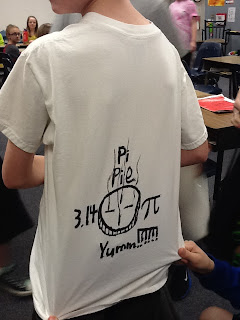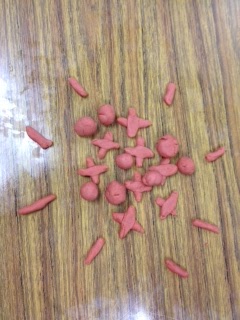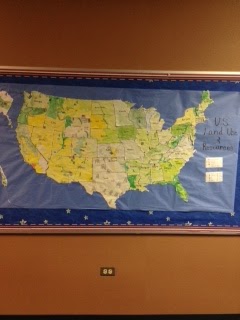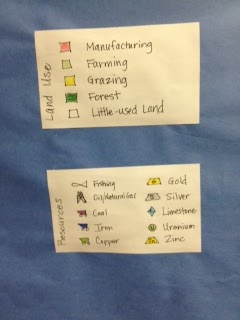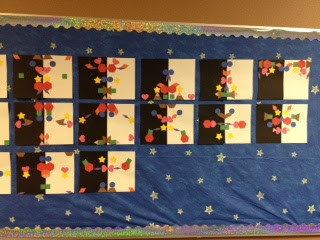Parent Night Info:
Multiplication and Division Models
PACE due dates and people to choose from
Math:
Students apply their understanding of number systems (whole numbers, fractions, decimals, and associated models) to deepen their knowledge of fractional parts relative to a whole, while using addition and subtraction, comparing and ordering, and approximating sums and differences in various situations.
Standard Form: 2, 459, 133.16
Word Form: Two million, four hundred fifty-nine thousand, one hundred thirty-three and sixteen hundredths.
Expanded Form: 2, 000, 000 + 400, 000 + 50, 000 + 9, 000 + 100 + 30 + 3 + .1 + .06
Place value of underlined digit: 100, 000 place
Value of underlined digit: 400, 000
Period of the underlined digit: Thousands Period
1/10 = .1
1/100 = .01
10/100 = .010
How many times larger is the first '3' than the second '3'? 30 is 10X larger than 3
How many times smaller is the second '3' than the first '3'? 3 is 1/10 of 30 it is 10 X smaller
Students will also be able to compare and order whole numbers, fractions and decimals to the thousandths including using the >, <, = symbols, add and subtract fractions, decimals, and mixed numbers.
Reading ~ Writing ~ Speaking ~ Listening
Reading on-level text with purpose and understanding, accuracy, and expression, with a fluency rate target of 150 or above. Acquiring and using words and phrases, while determining the meanings of words based on grade 5 content, and combining knowledge of grade-level phonics and word analysis skills (word study and root words).
Comprehension skills include using strategies to construct and apply meanings while quoting from text, comparing and contrasting text, determining themes, identifying figurative vs. literal text, and summarizing text.
Written language includes using legible handwriting, use of correct punctuation, spelling, capitalization and grammar, paragraph structure, and organization of ideas. Students will plan, revise, edit, and rewrite appropriate to a task, purpose, and audience.
Science:
 |
| Glow Stick Lab |
 |
| Lab determining if Cold or Hot water would effect the Glow Sticks. Students had to use the Scientific Method to predict and determine WHY the brightness changed with the differing water temps. |
Students will design and conduct experiments using the scientific process. This trimester, students will know the structures of matter: atoms, elements, periodic table, compounds, and identify physical vs. chemical changes in matter.
Students are expected to draw the first ten elements as drawn below:
 |
| Carbon Dioxide Molecule |
 |
| Creating atomic structures using playdough |
 |
| Another Carbon Dioxide Molecule |
 |
| Carbon Dioxide and Water Molecules |
Social Studies:
Constitution Study Guide Test 2/12/14
Constitution Study Guide - Branches of Gov't
Revolutionary War Essay Study Guide Test 12/19
Students and teachers role played as Queens and Colonists, where as the Colonists were heavily taxed, leading to a rebellion and finally, to a treaty signed by all.
 |
| Queen Baker and Queen Wright of Wrightland (Each day, more and more jewelry was worn to depict our accumulating wealth.) |
 |
| Sir William created a Declaration of Independence He and others in the Continental Congress planned a rebellion, pouring all of the Queen's Diet Pepsi with Lime down the drain! |
 |
| The Declaration of Independence was signed by a majority of the Patriots. A few Loyalists remained loyal to Wrightland and it's Queens. |
 |
| Finally, a treaty was reached between the Queens and the Patriots, in which Respect, Responsibility, and Safety would be the laws of the land. |
 |
| Queens and Students signed the treaty with feather quills and ink. |
Students will be learning about the colonization of America, describing the interactions between European colonists and established societies of North America. Students will identify and explain the impact of political/cultural groups on America, learn about the original 13 colonies, and describe the motives of immigrants to the U.S.
Students will use maps, globes, technology, and more to obtain geographical information, as well as identify the regions and states of the U.S.A. Students will also identify the resources of each region.
 |
| Land Use and Resource Mural Students were each given one or two states to label the regions resources. Then, we pieced the puzzles pieces together to make this amazing mural! |
 |
| Students will need to know each state name when given a blank map.
Students also need to know which states belong in which region:
Pacific Region: Washington, Oregon, California, Alaska, HawaiiRocky Mountain Region: Idaho, Montana, Wyoming, Nevada, Utah, ColoradoSouthwestern Region: Arizona, New Mexico, Texas, OklahomaGreat Plains Region: North Dakota, South Dakota, Nebraska, Kansas, Minnesota, Iowa, Missouri, Wisconsin, Illinois, Michigan, Indiana, OhioSouthern Region: Arkansas, Louisiana, Mississippi, Kentucky, Tennessee, Alabama, West Virginia, Virginia, North Carolina, South Carolina, Georgia, FloridaNew England/Mid-Atlantic Region: Maine, New Hampshire, Vermont, New York, Pennsylvania, New Jersey, Massachusetts, Connecticut, Rhode Island, Delaware, Maryland |
2012-2013 5th Grade Items are below:
Pi Day...March 14 (3.14)
Celebrating Pi day was so much fun. We began exploring what "Pi" means and discussed the universal symbol of Pi. We then used estimation skills in determining the Circumference of the tetherball court, by first finding the diameter, then multiplying by 3. Students used chalk to find the estimated Circumference using non-standard units of measure. We used protractors to draw circles, then measured and calculated Circumferences. Food coloring was added to bubble solutions for students to blow bubbles onto paper, created circles of different sizes which was then used for determining Circumference. Our day culminated in pie eating, reading Sir Cumference and the First Round Table by Cindy Neuschwander, and writing a story about Pi day using homographs (bow/bow) and homophones (Pi vs. Pie). What a fun day!! Below are the pictures!
Click here for PACE people of interest
Click here for the PACE Timeline (Due Dates)
Click her for PACE Summary and Rubrics (grading criteria)
Math:
RT 7 Algebraic Thinking - Ask your child about PEMDAS.
Science:
RT 6 Living Systems
Cells are the basic units of life. Fifth graders learned about the similarities and differences between plant and animal cells while completing a lap book full of fun facts, looking at different cell tissues through microscopes, and using air-dry clay to create a 3d model of both types of cells.
Requirements for painting the cells were demonstrated. |
Each student created a Biology lapbook with the diagrams of cells, cell organelle names and functions,and venn diagrams comparing and contrasting plant and animal cells. |
RT 5 Stages of Matter
To assess students abilities to conduct, record, and analyze data, students were given the question:
What happens to a chemical when energy is added or removed? Students were given glow sticks, cold water, hot water, and a thermometer. Students were asked to set up the experiment, record their findings, and analyze the results. Below is a short video in which a few groups gave their insight as to why the chemical in the glow stick was "dim" or "glowing brighter".
RT 4 Relates to Matter
We have been really loving learning about Matter. Click on the Technology In The Classroom tab to see the ipad apps we have been using to gain a deeper understanding of matter.
Students memorized the first 10 elements of the Periodic Table. We sang them to our favorite music verse or nursery rhyme. Top Ten Elements Song and another Whole Class First Ten Elements Song
Then we used play dough to construct the elements. Mrs. Wright called out the element name and students created the model based on it's atomic mass. In 5th grade, students need to know that in an element, the protons and neutrons reside in the center Nucleus, and the electrons float around them. The number of protons and electrons must be the same, so we kept the neutrons equal as well. Students must know: Protons have positive charge, Electrons have a negative charge, and Neutrons have no charge (they are neutral).
This must be Carbon because it has 6 protons (6 neutrons) and 6 electrons. |
This student created the Lithium atom with the electrons represented as rings around the nuleus. |
Lithium atom - atomic mass of 3 |
RT 1, 2, 3 relate to the Scientific Method. Students Hypothesize, set up and test experiments, and analyze results. On October 1, students conducted experiments to answer the following question:
"Which penny holds more water: A penny with soap or a penny without soap?"
Below are some pictures from the experiment.

Math:
5th graders should be able to read and write decimals to thousandths using base-ten numerals, number names, and expanded form; Use whole-number exponents to denote powers of 10.
ex:
789.123
Word Form: Seven hundred eighty-nine and one hundred twenty-three thousandths.
Expanded Form: (7x100) + (8x10) + (9x1) + (1x1/10) + (2x1/100) + (3x1/1000)
Powers of 10 with Exponents |
Ped & Man study guide (Greek/Latin root word)
Social Studies ~ History ~ Geography
Students studied a "land use and resource" map, then created a large mural replicating the map. Below are the steps to our mural.
Name the Regions and all 50 States.
US Regions Study Guide |
Students also need to know which states belong in which region:
Pacific Region: Washington, Oregon, California, Alaska, Hawaii
Rocky Mountain Region: Idaho, Montana, Wyoming, Nevada, Utah, Colorado
Southwestern Region: Arizona, New Mexico, Texas, Oklahoma
Great Plains Region: North Dakota, South Dakota, Nebraska, Kansas, Minnesota, Iowa, Missouri, Wisconsin, Illinois, Michigan, Indiana, Ohio
Southern Region: Arkansas, Louisiana, Mississippi, Kentucky, Tennessee, Alabama, West Virginia, Virginia, North Carolina, South Carolina, Georgia, Florida
New England/Mid-Atlantic Region: Maine, New Hampshire, Vermont, New York, Pennsylvania, New Jersey, Massachusetts, Connecticut, Rhode Island, Delaware, Maryland
***************************************************
2011-2012 3/4 Combo Items listed below:
Ecosystems Lap books
Students enjoyed compiling items for their Ecosystems Lapbooks, such as: Food Web vs Food Chain, Vertebrates/Invertebrates; Biomes; and more!
Symmetrical Art ~
Students used polygons and non-polygons to display them in a symmetrical art form. They were AWESOME!
Descriptive words to replace "SAID"Thanks "Pinterest" for this great idea, which is now displayed on our classroom wall. |
4th Grade ~ Native Americans in Idaho Study Guide (Test 12/9/11)
4th Grade At Home Solar System Project Requirements (click link)
4th Grade Salt Dough Idaho
Idaho's Physical Attributes |
3rd Grade Salt Dough Solar System
Fractions Representations
3rd Grade Phases of the Moon
4th Grade Quizlet Magnetism Flash Cards
4th Grade: Symbols of Idaho Study Guide
Daily 5 and Our CAFE
Each "Daily 5 Bin" has a student number on both sides. Students place them back in order for a quick reference.Bins have 3-5 books (chosen by the student), a pencil, and their Daily 5 Journal. |
Book Buckets are labeled by Genre, with a specific sticker to represent the genre.A matching sticker is placed on the spine of each book,so students place the book back in the corresponding Book Bucket. |
Example of our "Tuesday". |





